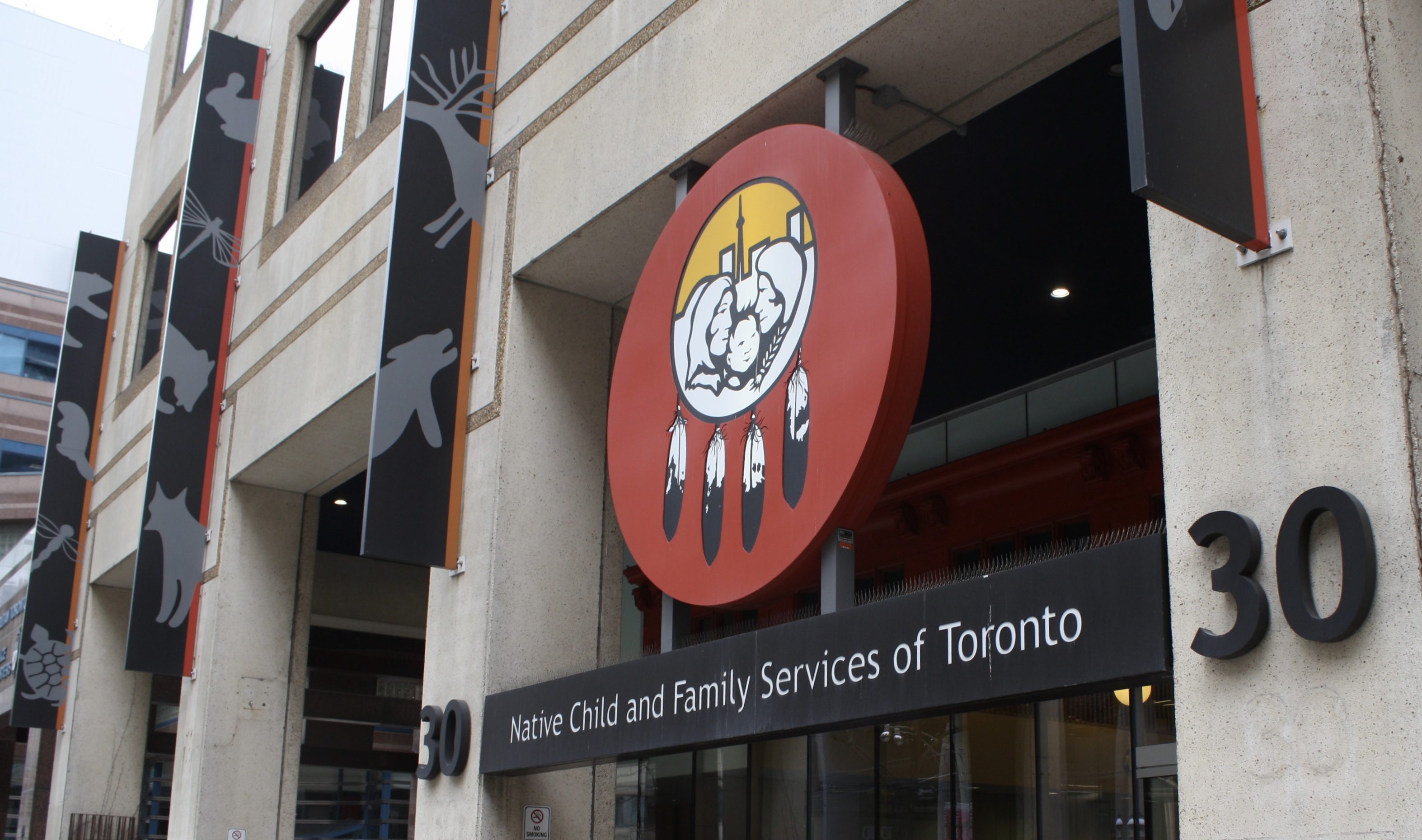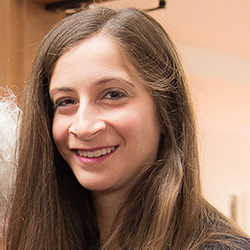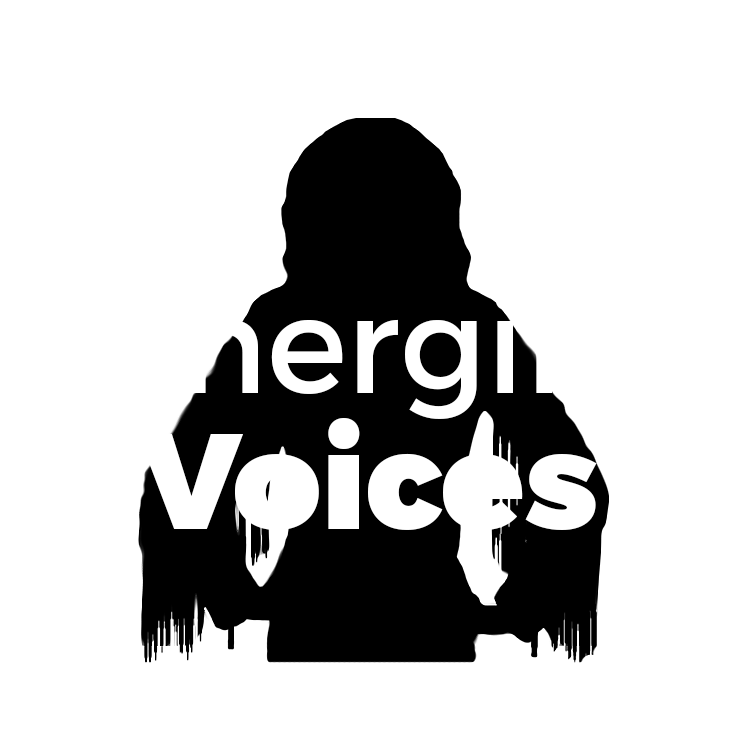Dr. Lindsay Herzog remembers how nervous she was the first time she attended a community event at Native Child and Family Services. A fourth year medical school student at the University of Toronto, she was hoping to improve her understanding of Indigenous culture to better serve her future Indigenous patients. But as she prepared to attend the event, she worried the Indigenous community might not feel comfortable with her there.
“My main fear . . . was that I would seem like an intruder – someone who was there to learn from the Indigenous community without having anything to offer in return,” says Herzog. “I wasn’t sure how I would introduce myself, still working to understand my purpose for being there.”
As it turned out, Herzog wouldn’t have much to worry about. Within minutes of arriving at Native Child and Family Services, her nerves dissipated and her concern turned to comfort. She was warmly welcomed by the Indigenous community and felt more at ease as the evening progressed.
“I joined in on a beading group and over time felt less like I was studying the Indigenous community and more like I was trying to become a part of it in some ways,” says Herzog.

Native Child and Family Services of Toronto regularly holds events for families. (Anna Wasserman)
Over the next four weeks, she would continue to do exactly that. She attended drumming circles and blanket exercises, youth groups and panel discussions; she made connections within the Indigenous community, and embraced as many teachings as she could.
She describes this month as profound and says she has her alma mater to thank.
Indigenous doctors Lisa Richardson and Jason Pennington, Co-Leads of Indigenous Medical Education in the MD program at the University of Toronto, have long championed the need for additional courses in the medical school curriculum that would teach students about Indigenous health.
In 2014, their efforts came to fruition when they launched the Urban Indigenous Health elective, a course that immerses students in Indigenous culture to help them better understand and treat Indigenous patients. Through community interactions and events, students learn about Indigenous health and the importance of cultural safety, anti-racism and anti-oppression.
The elective – the first of its kind in Canada – was inspired by Anishinaabe pedagogy, which encourages learners to interpret the world from their own experiences. According to Richardson, the elective, which emphasizes learning from experience rather than narrative reflection, was born from an understanding that learning is transformative when it’s experiential.
“Although we have a number of lectures, online modules and community panels that speak to our students about Indigenous peoples and their experiences in health care, we thought it would be powerful to have interested students learn the experiences of Indigenous peoples in an urban city like Toronto by actually being in the community,” says Richardson.
Final year medical students who wish to participate in the elective can enroll in two to four-week sessions, depending on how much time they have available. The elective takes place each year between February and April, after students receive their residency assignments.
Regardless of the duration, students are expected to attend upwards of four community events each week. To emphasize the self-directed nature of the elective, students can attend events from a list provided to them at the beginning of the elective, or they can choose their own. Students are also required to complete a list of readings and to submit a reflective writing piece at the end of the session. While the elective is predominantly hands-on, Richardson says the reading and writing requirements are a key component of students’ learning, particularly when it comes to understanding the importance of culture.
“We really wanted students to focus on developing an understanding of who they are and their roles and perspectives as healthcare providers,” says Richardson.
“Through reading and writing, students start to understand that everyone is a bearer of culture, whether that plays out in positive ways or in negative ways – as is particular with Indigenous peoples because of stereotyping and racism.” Societal judgment and discrimination is a major contributor to the profound inequities in the health of Indigenous peoples in Canada.
The shameful treatment of Indigenous peoples often results in a disconnect from their identity, which when combined with other socio-economic determinants of Indigenous health, leads to higher prevalence rates for most diseases. In particular, Indigenous peoples in Canada experience higher rates of diabetes, HIV/AIDS, asthma, arthritis, anxiety disorders and high blood pressure.
They also experience higher rates of obesity, smoking and drinking, suicide and infant mortality, and shorter life expectancies. Across Canada, more Indigenous people report having at least one chronic condition than do non-Indigenous people. They also indicate worse overall reported health.
Mitigating these health inequities is complex, but the Truth and Reconciliation Commission of Canada, established in 2008, has made a number of health recommendations, including calling upon the federal government to establish goals that identify and close the gaps in health outcomes, and calling upon medical and nursing schools to require all students take a course dealing with Indigenous health issues.
Health care providers are also tasked with ensuring a safe space where Indigenous patients feel welcome and protected.
According to Richardson, the Urban Indigenous Health elective aims to provide medical students with the knowledge and experience necessary to provide Indigenous patients with the safe and appropriate care they’re entitled to, but have traditionally been denied.
“A cornerstone of addressing health inequities is culturally safe and anti-racist care,” says Richardson. “To supply this, we need providers to truly understand historical trauma and ongoing experiences that may be contributing to health inequities, due to barriers in accessing the system, such as not feeling welcome.”
While Richardson acknowledges that systematic changes are needed, she says the elective serves as a stepping stone for future healthcare providers to start understanding these histories and experiences.
“I came out with a whole new understanding of how to work with Indigenous patients, as well as those from cultures that are different from my own.”
— Dr. Lindsay Herzog
For Herzog, the elective serves as more than just a stepping stone – it’s a transformational experience that creates self-aware, compassionate physicians. She says she learned more in the four-week elective than she ever thought possible – a direct reflection of the value of immersive, non-traditional ways of learning.
“I went into the course knowing it would be a unique experience that would let me learn about a population I hadn’t felt entirely confident in my ability to communicate with or work with,” says Herzog. “But I came out with a whole new understanding of how to work with Indigenous patients, as well as those from cultures or backgrounds that are different from my own.”
Now a second year family medicine resident at Mount Sinai Hospital, Herzog says she often employs strategies or activities she learned in the elective. Most recently, she incorporated an Indigenous blanket exercise into didactic teachings about Indigenous health, to help her fellow residents understand the historical context for health issues faced by Indigenous peoples.
Inside the exam room, Herzog says her experiences have changed the way she approaches Indigenous patients.
“When I see an Indigenous patient now, I feel this sense of connection,” says Herzog. “I’m aware that I still don’t know everything, but I’m able to be respectful and more aware of their history and what might be impacting their interactions.”
Herzog wishes everyone could have this experience – and she isn’t the only one who feels this way.
According to Richardson, the feedback has been “amazing” – so much so that she’s working on having the elective coordinated out of Women’s College Hospital, which would extend the opportunity to more people.
“To open the elective to involve residents – who are physicians already, not just students – would be wonderful,” says Richardson. “That’s my hope.”

Anna Wassermann was born into a family of healthcare professionals, but squeamish, she knew a career in medicine wasn’t for her. Struck by dinner table conversations she had with her parents growing up, Anna developed a passion for sharing stories about Canada’s healthcare system. She looks forward to pursuing this further when interning at the CBC Health Unit later this month.

